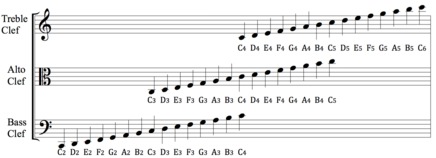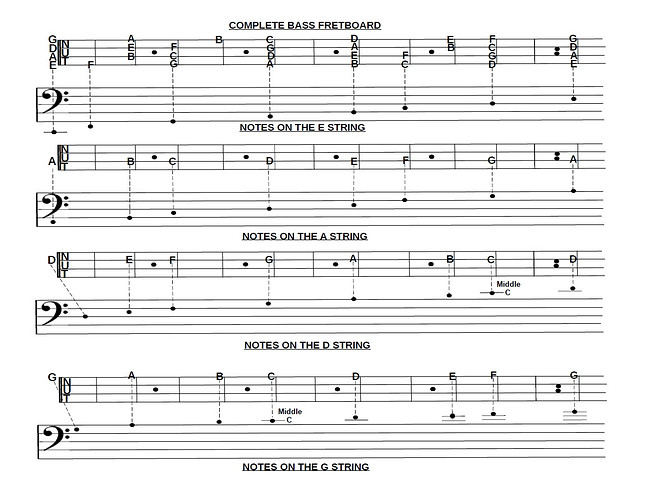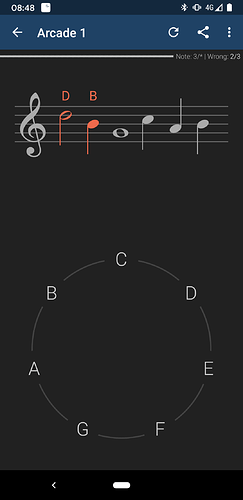I am working through the Hal Leonard bass book sort of in parallel with this course, so there’s music reading there. I’ve played woodwinds for almost 40 years, but haven’t had to read bass clef except when I briefly played the bassoon in high school (about 30 years ago). It’s not that hard, but learning it while also playing a completely different kind of instrument is kind of hurting my brain. I always keep the music and tabs open for Josh’s lessons while I watch them too. I’m really glad that exists.
Bless your heart! The bassoon is regarded as one of the most difficult musical instruments to learn. Master that instrument, and you’ll never be unemployed.
Gosh, I know. My high school had a very bad band - basically, all of the “good” kids were in choir - and our band director picked me to learn the bassoon because I was pretty okay as a flute player. That thing had like 11 pinky keys and 13 thumb keys. And, for those who don’t know, flutes, clarinets, and saxophones - all sizes - have basically the same fingerings. Bassoon? Totally different.
I played bassoon through three concert seasons in high school and I was never particularly good at it, but I did learn how to not have it sound like a dying giraffe.
One thing I’m enjoying about the bass is that, while I might make some weird sounds playing it, the simplest note all by itself always sounds nice. That is definitely not true of a wind instrument.
That just made me pee my panties from laughing.
Me too. You beat me to posting it LOL. Dying Giraffe OMG…
That’s what they sound like when you start!!
It worries me ever so slightly to think that you know how a giraffe sounds in its dying moments.
I have a vivid imagination.
If you’d like to hear it for yourself, this woman tries her first note at 7:42 of this video.
oh jaysus the poor bassoon
Not only do you have to learn to play this instrument, you have to learn how to assemble the damn thing. Sheesh



(I realize this is an old post, but standard notation has been around for a long time!)
I made this cheatsheet that shows the natural notes in standard notation and where they are located on the fretboard (4-string, through the 17th fret).
Nice chart @Sachelis
For beginners, this shows the Bass cleff and notes running into the Treble cleff.
The first note on the ledger line above the Bass cleff is called Middle C, named thusly because it is in the middle between the Bass and Treble clefs.
From there it runs up into the treble cleff, where you will usually see most vocals and 6 String guitars.
Usually any piano sheet music will show both clefs.
That’s a nice guide.
I used to be able to read the bass clef (due to a short love affair with a sousaphone), but have since forgotten. Treble clef no problem, just keep putting off the bass clef, no real reason to other than laziness and wanting to learn 1500 other things as well.
Here’s a complete guide to the notes and positions of the Bass, Alto, and Treble Clefs
We rarely see any sheet music with the Alto clef, for what we play, and if you look closely you will see that the Alto clef straddles the Bass and Treble clefs and it just confuses me. You could just eliminate the Alto clef in the diagram and that would be fine for our purposes. I did this in the second diagram.

Diagram 1

Diagram 2
Those notations are correct for piano but incorrect for bass guitar as bass notation is transposed up an octave. So the note marked “E2” there, as it would be on a piano, is actually E1 in sheet music notated for a bass guitar - the open E string. The bass strings are E1–A1–D2–G2.
Missed that @howard Thanks for clarifying.
np! it’s totally nonobvious 
A while ago while learning the notes on the Bass fretboard, in relation to their position on the Bass staff, I made up these charts for each individual string on a 4 string Bass with standard tuning, up to the 12th fret. I decluttered the standard fretboard diagram by not putting in the sharps and flats. These should be self explanatory ie. go up one fret to sharp a note or down one fret to flat a note.
I also put the note names on the diagram in the location that they should be fretted. I did this because I have met several people complaining about fret buzz and it turned out that there really was not a problem with the instrument but there was a problem with where they were fretting the note. Several people were even fretting on the wrong side, between the fret wires, ie closer to the headstock and they always had buzz.
Thought this may be of interest/help to some beginners.
There’s also the Complete Music Reading Trainer app that has an arcade mode where you have to choose the notes that appear. They keep scrolling along. It’s pretty cool. It’s a few dollars though. They have bass clef specific ones. Just grabbed a quick screenshot of the treble one though. You can actually use the Treble one for free if you want to try it out, but the Bass one costs money.



